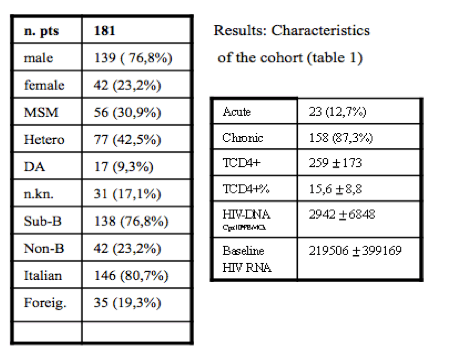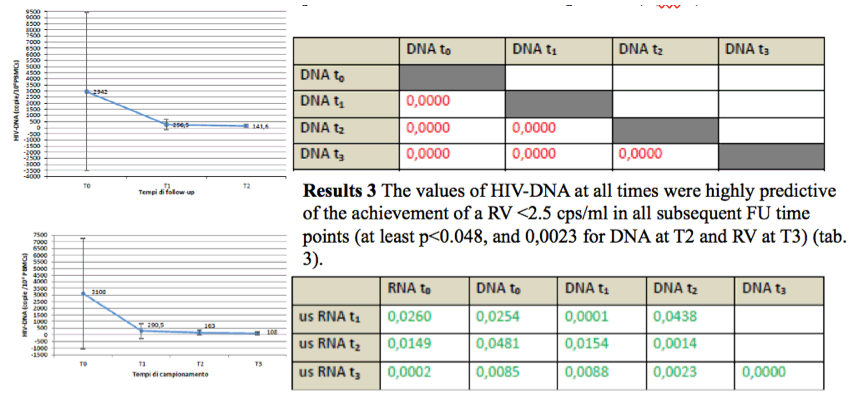 |
 |
 |
| |
Strong Correlation Between The Reduction Of Cellular HIV-DNA Load And Achievement Of HIV Plasma Viremia<2.5 Copies/ml In An Observation Period
Of 4 Years Of Effective Antiretroviral Therapy In Na´Ve Patients
|
| |
| |
Reported by Jules Levin
ICAAC 2013 Sept 10-13 Denver, CO
S. G. Parisi1, A. Samantha1, R. Scaggiante1, M. Cruciani2, R. Ferretto3, V. Manfrin4, L. Sarmati5, M. Basso1, M. Andreoni5, C. Mengoli1, G. Palu'1.
1Padova Univ, Padova, ITALY, 2ULSS 20, Verona, ITALY, 3Schio Hosp., Schio, ITALY, 4Vicenza Hosp, Vicenza, ITALY, 5Tor VergataUniv, Roma, ITALY.
Background: HIV-DNA levels in peripheral blood mononuclear cells (PBMCs) provide an estimate of the size of HIV-1 cellular reservoir (HIV-DNA). The clinical and prognostic significance of HIV-DNA levels is still to be clarified. The purpose of the study was to identify correlations between HIV-DNA and a well controlled HIV replication in plasma (<2.5 copies/ml, RV) in a longitudinal perspective.
Methods: a cohort of 181 HIV infected patients, naive and treated with effective antiretroviral therapy (ARV) were enrolled in a longitudinal study. Patients achieved within 6 months and always maintained plasma viremia<50 cps/ml; CD4, HIV-DNA (measured by Real Time, sensibility <5 cps/million PBMCs) and RV (sensibility <2.5 cps/ml) were evaluated at the beginning of treatment (T0) and at three subsequent times of follow-up (FU): FU1 (median 24 months), FU2 (median 36 months), and FU3 (median 48 months). A FU3 time was available for 70 out of 181 patients.

Results 1 HIV-DNA levels showed a decay kinetic with a greater slope between T0 (2942 cps, mean) and FU1 (256 cps) and a slower decay thereafter (141 cps at FU2 and 108 at FU3) (fig 1, fig 2).
Results 2 There was a strong positive correlation at all time points between HIV-DNA values (p<0.0001) (tab 2).

Results 4 Finally, the condition of primary infection at the beginning of therapy was associated with the lowest levels of HIV-DNA at all time points and with a higher likelihood of achieving a RV<2.5 cps/ml and a better immune recovery.
Conclusions: This study provides data by a longitudinal perspective over three FU time points across 4 years on the positive relation of HIV-DNA load over time; a significative correlation between the amount of the HIV archive and the achievement and maintenance low RV was showed. Moreover, the initiation of ARV during primary infection is associated with an higher probability of virological success in term of amount of archived DNA and plasma virological control.
|
| |
|
 |
 |
|
|